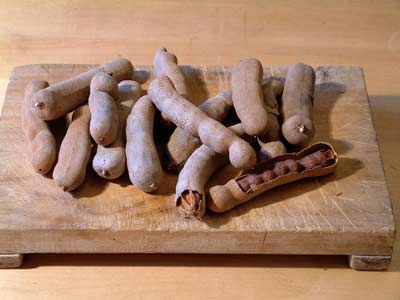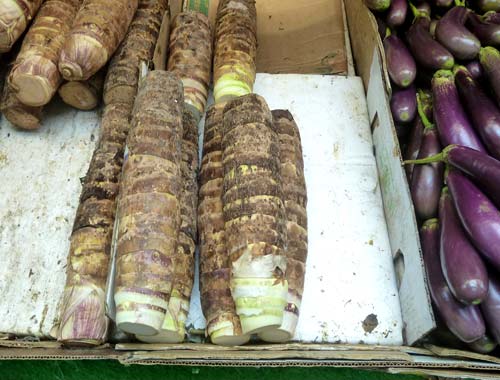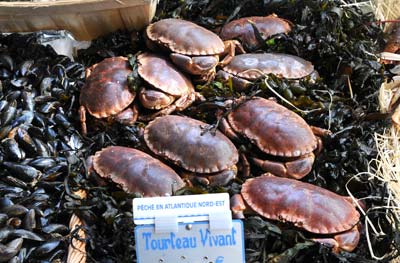Tallow. A substance consisting of a somewhat hard animal fat (esp. that obtained from the parts about the kidneys of ruminating animals, now chiefly the sheep and ox), separated by melting and clarifying from the membranes, etc., naturally mixed with it; used for making candles and soap, dressing leather, and other purposes.

Tamarind. A sour-sweet fruit, sometimes known as the Indian date, used as a souring agent. It comes in long, dry brown pods which look almost like dried broad bean pods. Inside is a long, segmented fruit, like a long brown caterpillar. Each segment contains a hard, shiny black seed. As the pods dry the fruit becomes sweeter. A visitor from Mauritius suggested shaking the tamarind and, if you could hear that the fruit had detached and was rattling a little inside the pod, you would find that the fruit was sweet. All you need to do is to remove the pod and then chew the fruit, discarding the seeds. It is also available mashed and formed into a pulpy block or as a juice. In this form it is used like lemon juice.
Butterfish or gunnel. It has a long, slender, eel-like body which is flattened from side to side. The skin is very slippery, making it difficult to pick up, hence its common name. It is usually yellowish-brown with darker brown mottling. The most characteristic feature of the butterfish is a row of 9-15 black spots, each surrounded by a white ring, along the base of the dorsal fin. Adult fish are between 17-25cm in length (7-10”). Eels, some blennies and rocklings are a similar shape, however only the butterfish has a row of black spots surrounded by white circles at the base of the dorsal fin.

Taro. Colocasia. A plant grown both for its leaves and tuberous, potato-like roots, or corms. The roots, the flesh of which may vary from white to pink, have a delicate flavour and can be peeled and boiled, roasted, mashed, fried or included in a stew.
Beef tartar. This is made from very finely chopped raw fillet of beef mixed with onion, gherkins (US: dill pickles) and capers and formed into the shape of a steak. A depression is made in the top into which a raw egg is broken. It is eaten raw. The meat really should not be minced (US: ground). It is thought to have originated with the fierce Tartars of the Baltic region of Russia who shredded the meat with a knife and ate it raw.

The edible crab measuring as much as 20 cm (8”) across. This is a beast with well flavoured, succulent brown and white meat. I prefer a good fresh crab to lobster, though a good fresh lobster will do! The brown meat is held inside the carapace or shell, while the white meat is found, with a little effort, in the claws. It is fished in the eastern side of the Atlantic rather than the Mediterranean but is available in markets not on the Atlantic.